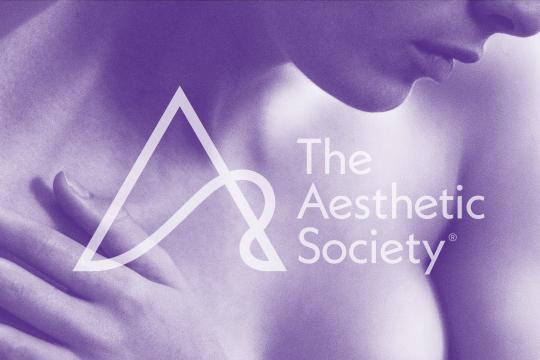
Words matter, right? Of course they do. So what happens when those same words are open to interpretation? This is exactly the type of quandary you don’t want to encounter when you’re trying to consider all of the fine details, side effects and recovery periods associated with any cosmetic procedure.
From non-invasive to invasive, there are 5 words that you’ll hear when it comes to most procedures and none of them are likely to bring on the happy feels: downtime, bruising, redness, swelling, and pain. On an up note, we know that these words come in varying shades of gray, so depending on the type of procedure and your individual tolerances you may experience the next-to-nothing version of these words. On the other hand you may experience the 20pt. version on a 10pt. scale. I’m exaggerating, of course, but the point is: you’re going to feel and or experience “something.” And in the spirit of that “something,” let’s take a moment to decipher these 5 words so you can prepare yourself to hear them spill from your doctor’s lips when you're discussing what to expect after plastic surgery or any cosmetic procedure.
Downtime:
Downtime is that magical recovery period after your procedure in which you won’t be able to jump back into your day-to-day routines and lifestyle. The amount of downtime that your doctor will recommended will depend on any pain and discomfort you experience post-procedure, as well as on your physical appearance (i.e. Whether or not you’ll horrify the masses.—We kid, but this healing business isn’t always pretty, is it?) Downtime averages are based on a majority of patient experiences—which means your downtime may be a little different than someone else's, it just depends on your tolerance level and ability to heal. Yet, like the levels of plastic surgery, there are common subsets of downtime as well.
Essentially no downtime means: Less than 24 hours.
Minimal downtime means: 24 to 72 hours.
Moderate downtime means: three to seven days.
Significant downtime means: more than seven days.
Some examples include the moderate downtime you might experience after some types of liposuction and the significant downtime you might experience after breast augmentation .
Bruising:
By definition, a bruise (ecchymosis) is the passage of blood from ruptured blood vessels into subcutaneous tissue, which forms a visible purple discoloration on the skin. Define it how you will, it ain’t pretty. Some people bruise if you look at them sideways, while others resist the most violent coffee table shin-banging with nary a scratch. Likewise, some bruises are faster to dissipate than others. All that adds up to a lot of undefined variables. So let’s instead explore the common subsets that will accompany the definition of bruising as it relates to your cosmetic procedure.
Essentially no bruising means: No bruising, but patients may experience some immediate changes in skin tone that should resolve within 24 hours.
Minimal bruising means: Bruising that resolves in less than a week.
Moderate bruising means: Bruising that resolves in one to two weeks.
Significant bruising means: Bruising that takes longer than two weeks to resolve.
Some examples of procedure related bruising might include the minimal to moderate bruising some people experience after Botox or after filler is injected into sensitive areas, and the significant bruising that might be associated with Rhinoplasty.
Redness:
Blushing, flushing, blood rushing. Redness of the skin (hyperemia) is caused by an excess of blood in the blood vessels of the skin. It can be caused by a wide variety of things—skin conditions, stress, too many cocktails, acne, sunburn—but the reason pertaining to our list of “words” is having certain cosmetic procedures. A pre- to the ruptured blood vessels of a bruise, redness is typically indicative of temporary irritation. Just how temporary, however, is what we’re going to trouble ourselves with here. Hence, more handy subsets.
Essentially no redness means: The skin will return to it’s normal (or better!) coloring in less than 24 hours.
Minimal redness means: Redness that resolves in one to three days.
Moderate redness means: Redness that resolves in four to seven days.
Significant redness means: Redness that takes more than seven days to resolve.
Examples can include the minimal redness associated with microdermabrasion and the significant redness associated with certain laser resurfacing.
Swelling:
The puffiest and possibly most disfiguring aspect of these “common terms” is also the most healing—swelling. Caused by fluid and white blood cells rushing to the rescue of the damaged areas, swelling comes in degrees of “meh” to Elephant Man. Of course, this also comes in varying degrees as it relates to your cosmetic procedure.
Essentially no swelling means: Swelling that resolves in less than three days.
Minimal swelling means: Swelling that resolves in three to seven days.
Moderate swelling means: Swelling that resolves in eight to 14 days.
Significant swelling means: Swelling that takes more than 14 days to resolve.
Examples can include the minimal swelling you might experience after laser tattoo removal and the significant swelling you might experience after a lower body lift.
Pain:
And finally we come to the word we fear the most—pain. But before you go all bananas, let me reassure you that “pain” in this instance, merely refers to any discomfort associated with your procedure. That means anything from “I have a slightly itchy spot on my eyebrow” to “Holy good god, I’m on fire!” Per usual, I exaggerate. (If you experience pain on that level, something is wrong and you need to immediately contact your doctor.) My point is that the range here is pretty darned vast.
Essentially no pain means: No pretreatment medication, local anesthesia during treatment, or post-treatment pain management is necessary. Over-the-counter medications or an icepack may be applied.
Minimal pain means: You may need pretreatment with oral prescription medications, topical agents and/or skin cooling during the treatment. You may also be prescribed pain management for after your treatment.
Moderate pain means: The same as “minimal pain, ” but you’ll be pretreated with local anesthesia.
Significant pain means: Again, you’ll be treated the same as with “minimal pain,” but will be pretreated intravenously with sedatives or general anesthesia.
Examples can include the minimal pain you might experience after laser or light-based therapies and the significant pain that might be associated with some invasive cosmetic surgeries like facelifts or brow lifts.







